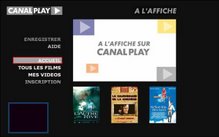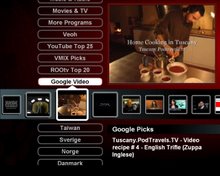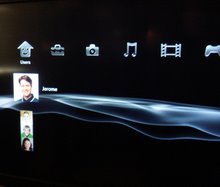Linked below is a report on the overlay TV-web demonstration by Red Bee at IBC. The reporter summaries the terminology well with the expression: “the prototype was running on a Futarque set-top with AMD's ActiveTV software; the set-top was connected in turn to an Internet-connected AMDLive! PC”.
The active-TV approach uses the PC’s browser to process the TV-web material ultimately presented at the hybrid-STB’s TV. The method avoids many of the “technical constraints” limiting a STB acting alone.
TV advertising is a $60B business in the US. The business is changing due to new consumer technology (DVR and TCP-IP) and new consumer behaviour. The use of TV-web channels and overlay TV-web are technical- and cost-effective new solutions.
Much, or maybe most, of the PC industry has struggled to position the PC-in-the-living-room as the platform-solution to the changes occurring with TV entertainment. The focus has also been on using computer networking to deliver an IP-TV alternative source of Hollywood-type content. No matter that this material is already widely available from several existing distribution channels.
Consequently, there has been more discussion about DTCP-IP content protection than new forms of TV advertising. I suggest there has been too much focus on offering alternative platforms supporting familiar forms of content consumption – merely using a new IP distribution method. Of more importance is developing lower-cost platform-solutions which address the changing nature of consumer behaviour. I suggest, this line of thinking, makes overlay TV-web more interesting than TCP-IP content protection.
Linked is an interesting US study entitled “The New ‘Digital Divide’, How the New Generation of Digital Consumers are Transforming Mass Communication.” Although much of the study is about PC-web behaviour, there are clearly implications for TV audiences and TV advertising – particularly given the emergence of active-TV technology.
[quote from New Digital Divide linked below]
“There is no doubt that we are moving rapidly from a world of passive receptivity to active engagement. No longer can we simply broadcast our messages to a mass audience and hope that our standard metrics of reach and frequency will guarantee success. Accountable engagement innovation is the battlefield of the 21st century”
- The age group 16-34 is 25% more likely than ages 35-49 to use instant messenger, with over 75% of ages 16-34 currently using at least one service.
- About 40% age P16-34 belong to a social network site; this is twice the percentage of 35-49 year olds.
- 71% of the 16-34 year olds have participated in a blogging activity.
- One third of 16-34's have participated in peer-to-peer file sharing compared to just 12% of those 35-49. [end]
Comments, corrections and feedback welcome.
more at http://universalmccann.com/downloads/papers/The%20New%20Digital%20Divide.pdf
and http://blog.itvt.com/my_weblog/2006/09/red_bee_showcas.html











No comments:
Post a Comment